This post may contain affiliate links. Learn more.
This is a simple but very special pot of cooked red lentils, adapted from Chef Yotam Ottolenghi. Don’t miss this vegetarian, gluten-free meal with easy vegan option. It’s so good.
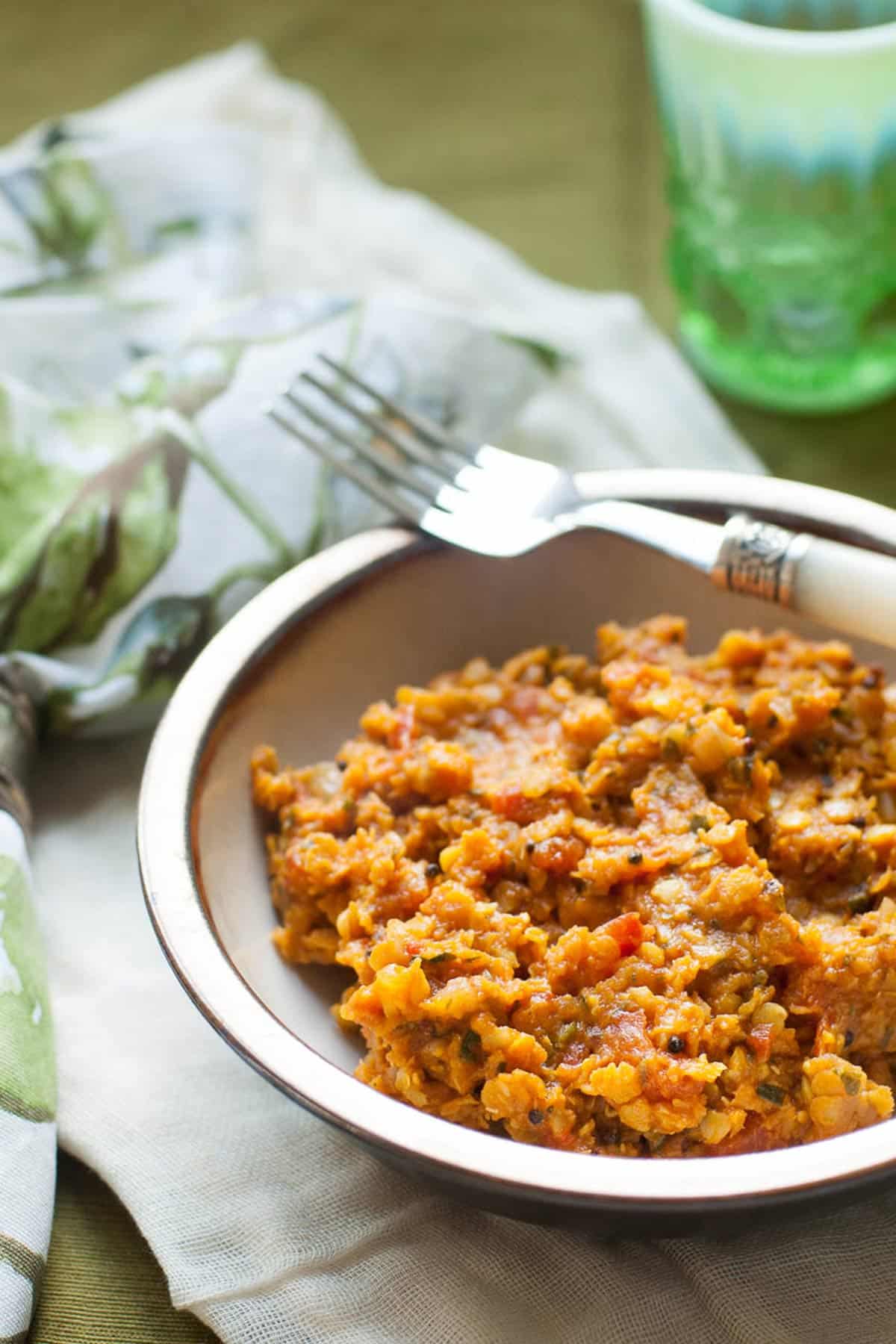
Why we love this recipe
If you’ve ever had anything to do with celebrated chef Yotam Ottolenghi, you’ll know right away that this recipe is special for a reason. The combination of flavors results in a dish that is:
- Deeply warm and comforting
- With layers of nuanced flavor
- While still being very straightforward to put together
- Ready in about 45 minutes
- Make-ahead friendly (it only gets better over time)
I originally published this adaptation in 2011. Over the years I’ve made my own additional tweaks to the recipe, but the flavor profile and the spirit of the dish remain unchanged.
What you’ll need
Here’s a glance at the ingredients you’ll need to make this recipe. A few of them may be new to you, so I’ll introduce them and let you know which ones are optional.
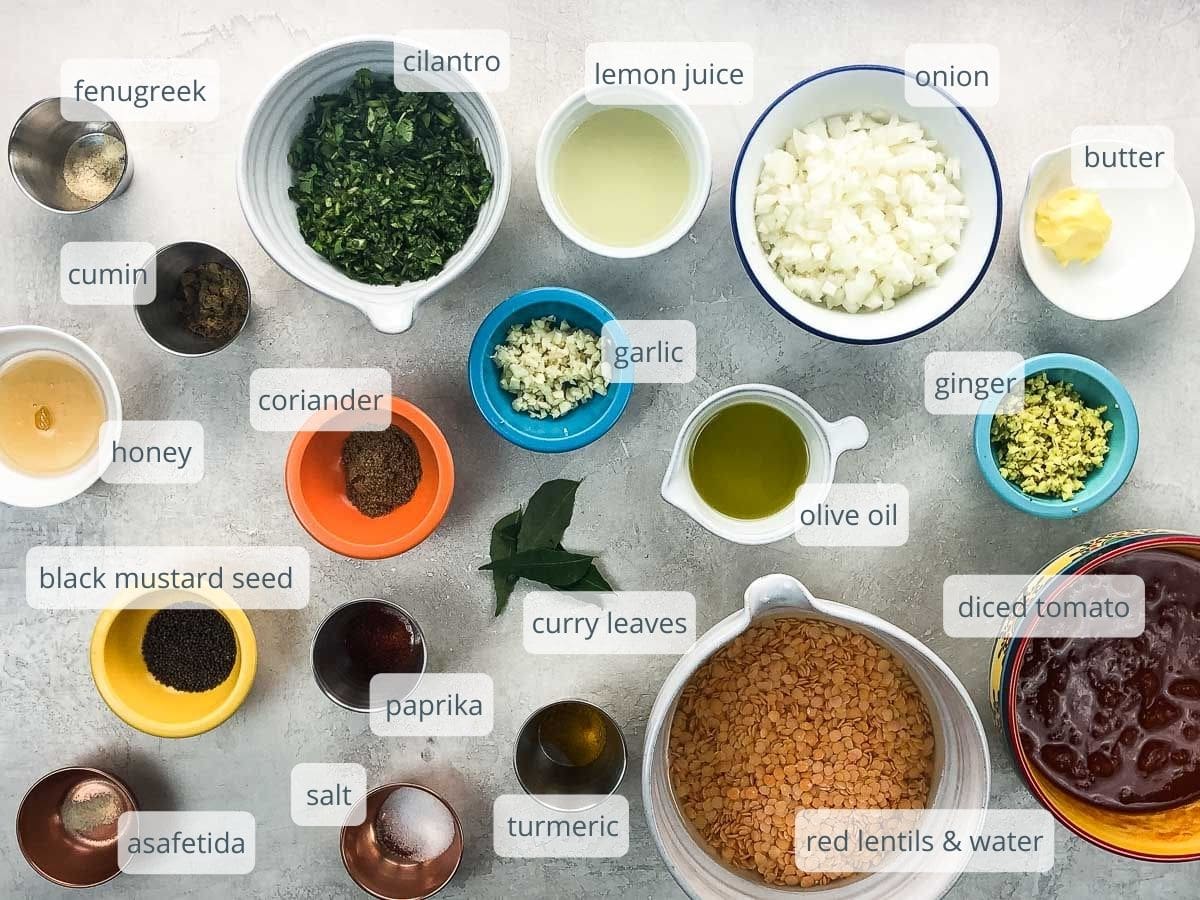
- Red lentils (sometimes called masoor) are a wonderful, versatile ingredient. They’re small and quick-cooking, full of protein and complex carbs, and great at soaking up flavors. There are several varieties commonly sold in the U.S., some smaller and redder, some a little bigger and more peach-colored. You can use them all interchangeably — just keep an eye on the cooking time and feel free to add a splash of water if you think it would be useful.
- Black mustard seed (sometimes called brown) is different from yellow mustard. It has a warmer, more complex flavor profile. Black mustard seed is a frequent ingredient in Indian and middle-eastern cooking and is well worth buying if you don’t already have it on hand. (You can type “black mustard seed” into the search bar on this site for some more great ways to use it.)
- Curry leaves come fresh or dried. You can use either version in this recipe, though fresh ones have a lot more flavor. If you’re lucky enough to have an Indian market nearby, buy them there, or at Whole Foods. Or get them online here or here (be sure to read reviews if buying on Amazon). If you can’t find them, you can leave them out.
- Fenugreek seeds and leaves are both used in cooking. This recipe calls for ground fenugreek (sometimes called fenugreek powder or ground methi). It has a beautifully aromatic, slightly sour character that adds a wonderful complexity to this dish and many Indian curries. Buy it online at Penzeys or The Spice Way if you can’t find it locally, though it’s easier to get in American supermarkets than you may think. It’s okay to leave it out if you can’t get it.
- Asafetida (also spelled asafoetida and sometimes called hing) is a dried, powdered resin that’s common in Indian vegetarian cooking. It’s part of the celery family and, in tiny quantities, magically enhances the flavor of curries. Buy it here if you can’t find it locally. It’s okay to leave it out if you can’t get it.
- At some point years ago for reasons I can’t remember, I started making this dish with olive oil, and it works just fine. But you’re welcome to use a more traditional choice like safflower oil or another neutral-tasting vegetable oil.
How to make it
Here’s what you’ll do to make a great pot of cooked red lentils. You can see the steps in action in the video that accompanies this post, and get all the details in the recipe card below.
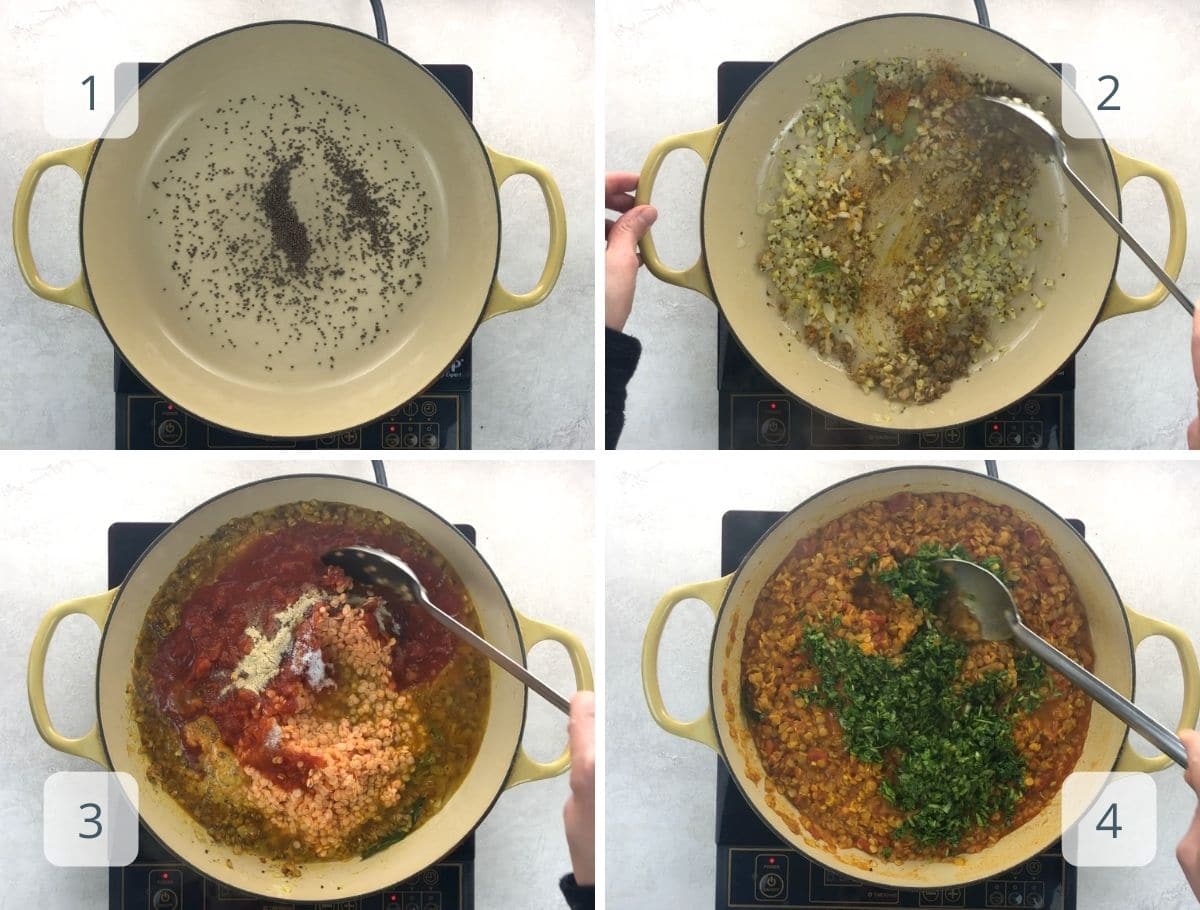
- The first step is to heat the mustard seeds in a dry pot until they pop. Then you’ll sauté the onion, garlic, and ginger along with the mustard seeds in the oil.
- Add the curry leaves and the ground spices that don’t mind high heat and cook, stirring constantly to prevent burning, for about two minutes.
- Then you’ll pour in the lentils with their soaking water, the tomatoes, and the other ground spices if you’re using them. Simmer, covered, until the lentils are cooked.
- Off the heat, stir in the butter, lemon or lime juice, and cilantro. That’s it!
Expert tips and FAQs
I’ve provided some online sources in the “What you’ll need” section above, but if those don’t work for you for some reason, don’t sweat it. Those flavors elevate this dish to a sublime level, but cooked red lentils are super-flexible, and this dish will be fantastic even without them.
You sure can. Just leave out the butter. You don’t need to make any other changes.
Yes. The flavors only improve over time, so make it anytime during the day and let it sit at cool room temperature, then reheat before serving.
Leftovers keep well tightly sealed in the fridge for up to a week, or in the freezer for up to a year.
More wonderful red lentil recipes
We are huge fans of red lentils around here. Here are a few more of our favorite ways to use them.
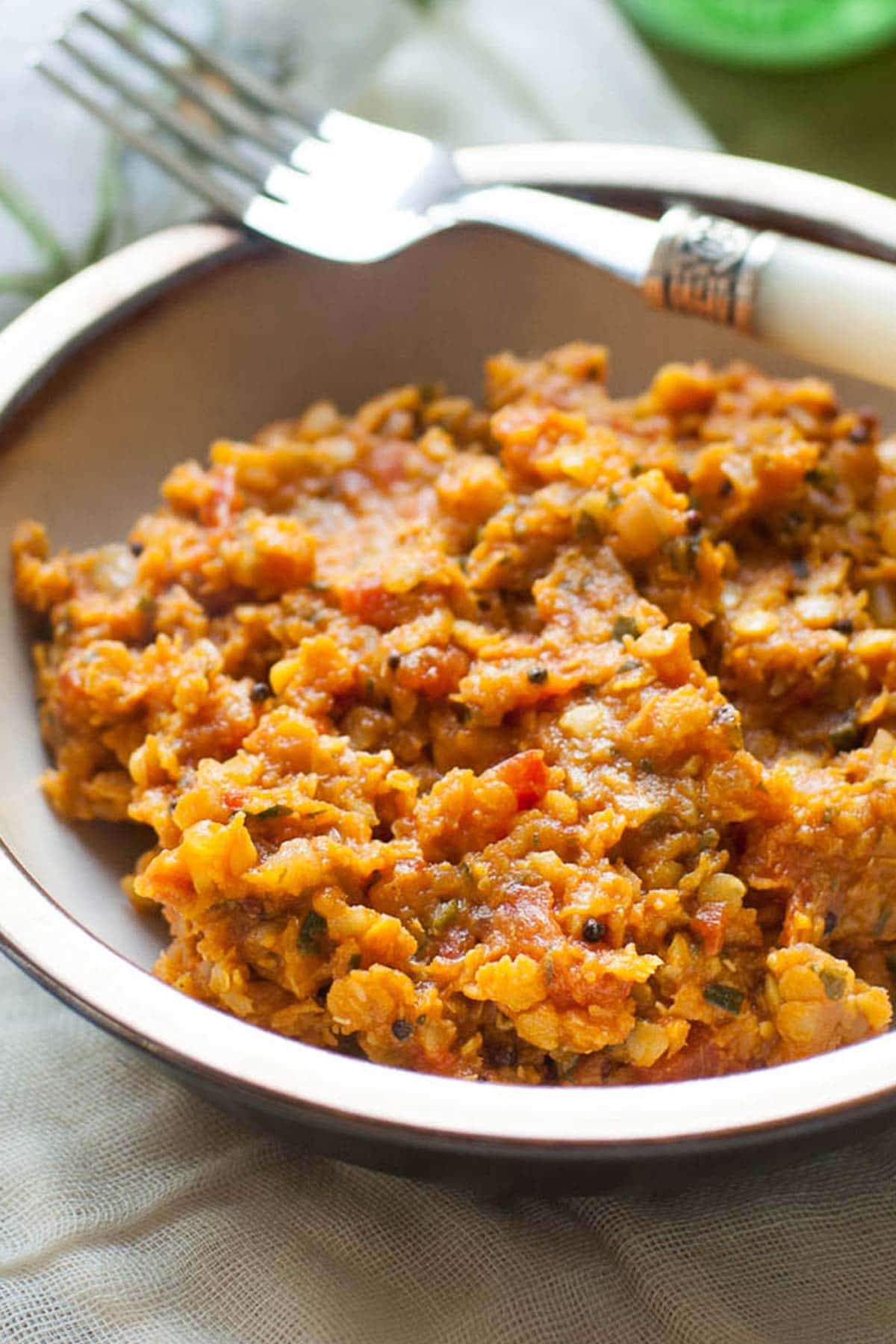
Hungry for more?
Subscribe to Umami Girl’s email updates, and follow along on Instagram.
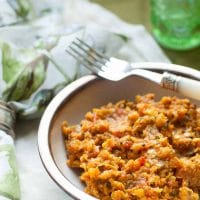
Cooked Red Lentils (Adapted from Ottolenghi)
Ingredients
- 2 cups (380 grams) dry red lentils
- 3 cups (710 ml) water
- 1 medium bunch, 4 ounces/(113 grams) cilantro
- 1 large yellow onion
- 6 garlic cloves
- 3- inch piece fresh ginger
- 1 tablespoon black mustard seeds
- ¼ cup (60 ml) olive oil
- 1 tablespoon ground coriander
- 2 teaspoons ground cumin
- 1 teaspoon ground turmeric
- ½ teaspoon ground sweet paprika
- 10 curry leaves
- 3 ½ cups (4 peeled chopped tomatoes, fresh or canned
- 1 tablespoon (honey
- ½ teaspoon ground fenugreek, optional
- ⅛ teaspoon asafetida, optional
- 1 teaspoon fine sea salt
- 2 tablespoons butter, optional
- 2 tablespoons freshly squeezed lemon or lime juice
Instructions
- Rinse the lentils well under running water, until the water runs clear. Then place them in a bowl with the 3 cups water and soak for 30 minutes. Do not drain.
- Meanwhile, mince the onion, garlic, and ginger.
- Finely chop the cilantro, including stems.
- Place the mustard seeds in a 5-quart Dutch oven or other pot with a heavy bottom, and cook over medium heat until they begin to pop.
- Add the onion, garlic, ginger, and olive oil. Reduce heat to low and cook, stirring frequently, for 3 minutes.
- Add the ground coriander, cumin, turmeric, paprika, and curry leaves, and continue cooking, stirring frequently, for 2 minutes.
- Add the lentils and their soaking water, the tomatoes, honey, fenugreek, asafetida, and salt, and stir to blend.
- Cover and simmer for about 20 minutes, until the lentils are fully cooked.
- Stir in the butter, lemon or lime juice, and cilantro.
Notes
- Adapted from Plenty by Yotam Ottolenghi. This is a beautiful book and very much worth owning.
- At some point years ago for reasons I can’t remember, I started making this dish with olive oil, and it works just fine. But you’re welcome to use a more traditional choice like safflower oil or another neutral-tasting vegetable oil.
- Curry leaves come fresh or dried. You can use either version in this recipe, though fresh ones have a lot more flavor. If you’re lucky enough to have an Indian market nearby, buy them there, or at Whole Foods. Or get them online here or here (be sure to read reviews if buying on Amazon). If you can’t find them, you can leave them out.
- Fenugreek seeds and leaves are both used in cooking. This recipe calls for ground fenugreek (sometimes called fenugreek powder or ground methi). It has a beautifully aromatic, slightly sour character that adds a wonderful complexity to this dish and many Indian curries. Buy it online at Penzeys or The Spice Way if you can’t find it locally, though it’s easier to get in American supermarkets than you may think. It’s okay to leave it out if you can’t get it.
- Asafetida (also spelled asafoetida and sometimes called hing) is a dried, powdered resin that’s common in Indian vegetarian cooking. It’s part of the celery family and, in tiny quantities, magically enhances the flavor o curries. Buy it here if you can’t find it locally. It’s okay to leave it out if you can’t get it.
- The flavors of this dish only improve as it sits, so feel free to make it in advance. Cook it anytime during the day and let it sit at cool room temperature, then reheat before serving.
- Leftovers keep well tightly sealed in the fridge for up to a week, or in the freezer for up to a year.
Nutrition
Nutrition information is automatically calculated, so should only be used as an approximation.
Hungry for more?
Subscribe to Umami Girl’s email updates, and follow along on Instagram.


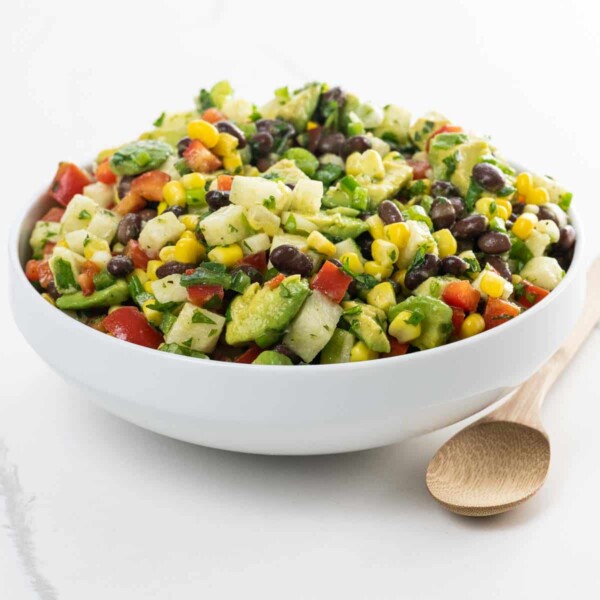
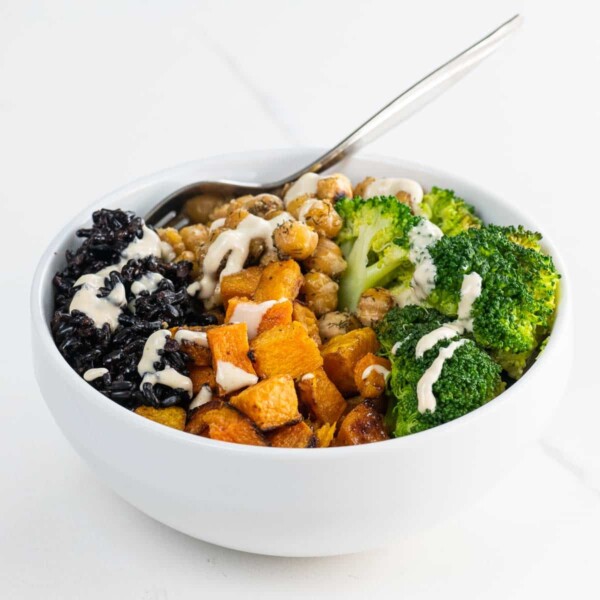
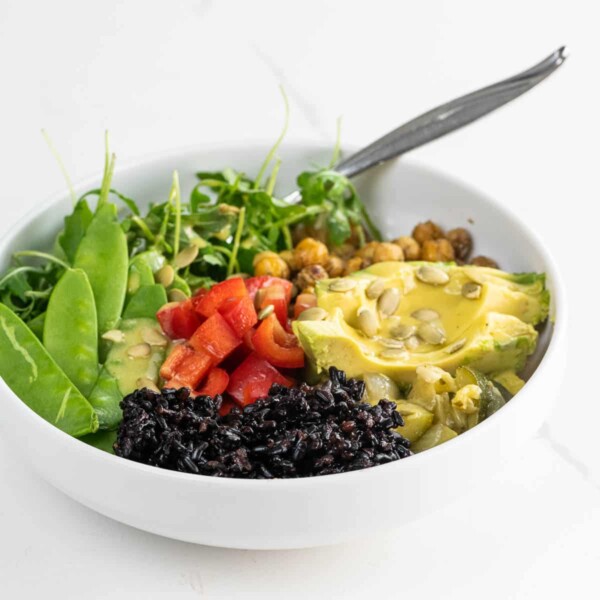
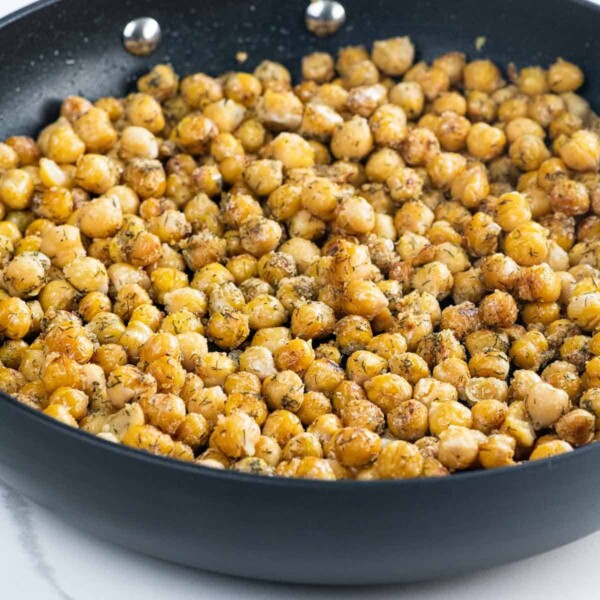







First of all, I love that you love Ottolenghi. I can only imagine how exciting it must be to eat his actual food given how much I adore the recipes in his cookbook. You’re a lucky lady.
I also enjoy all your Britishisms, from sweetcorn to goat’s cheese to chilli with 2 Ls.
I still haven’t seen Forks Over Knives. Thanks for the push, lady.
My favorite part about eating his actual food is that it’s *just* like what’s in the cookbook. Makes it feel like such a genuine expression of a person’s point of view.
Yup, I brazenly ignored my American spell-checker’s squiggly red lines under those chillis. (Hey, there’s one now….) My sister said she might murder me if I came back to the states with a British accent, so I won’t do that. But the spellings are kind of fun. And they do call them “spellings” here. Not a singular spelling or math to be found in the whole country.
I think you’d like Forks Over Knives. For some reason I was really resisting watching it, but I’m glad I did. xx
You’ve included fenugreek in the ingredients…is that fenugreek leaves or fenugreek seeds? They are very different in flavor and I wouldn’t want to substitute one for the other. Please advise.
Hi, Tanya. Good point, thanks. The original recipe didn’t specify seeds or leaves. That’s something to note about Plenty in general — in contrast to the way many cookbooks these days tend to spell out every last detail of direction, Plenty leaves…um…plenty to intuit. You kind of have to use your common sense to navigate the recipes, and then there will still be a few unanswered questions, such as this one.
I used fenugreek seeds, and it turned out well. I smashed them up a bit in my mortar and pestle before tossing them in. To be honest I’m not familiar enough with fenugreek to be able to say how things would’ve been different with the leaves. Maybe someday I’ll give it a try and report back. It’s such a teensy amount, so it won’t make or break the dish, I don’t think.
ooh I just bought a bunch of red lentils. Now I have a recipe to use them for! I bet I could even find the unusual spices at a local store.
Hi, Rachel! I think this is an excellent use for your new red lentils. Also, if I may say so, this would make another pretty spectacular use for them.
P.S. You and I must have birthdays very close to each other. Late September birthdays are the best. I am the teensiest decade older than you, but whatevs….
This sounds super yummy. Love this!
I think warm vanilla sugar sounds super yummy, too, so we’re even. 🙂
I LOVE Ottolenghi. Every single one of his recipes I’ve done has come out just great. I haven’t tried this one though. Glad to hear it’s yummy.
Hi, Jules! It’s lovely to meet a fellow Ottolenghi enthusiast in the U.K. Not that we’re exactly a rare breed, but still. Thanks for visiting!
I’ve heard so much about Plenty and I really think I may buy it. (Problem is: I have too many cook books. As in way too many. But hey! I think this is a must have anyway…)
Love your picture of the dish: gorgeous!
Thanks, Denise. I know what you mean about cookbook overload, but I really think this one is worth it. Because he’s such a genius at balancing flavors, I actually cook from this book often, as opposed to most cookbooks, which I may refer to occasionally and mostly just enjoy having in my general vicinity. Plus, the book has sort of a squishy pillow-top situation for a front cover, so you could always sleep on it if you run out of room….
More than just valuable recipes, I get to develop my vocabulary reading your blog too. You are fascinating!
Hi Anna, you’re way too kind. 🙂 I just read your bio on Fudo, and it reminds me of how much fun we had teaching sign language to our older daughter with the Signing Time DVDs (back in the day when they were just starting up). Do you know that series? We still use little bits of sign language all the time, and it’s incredibly helpful.
Thanks for visiting!
I am a huge fan of Ottolenghi and as fas as I know he is a genius when it comes to combining flavours! This red lentil recipe is no exception – it sounds absolutely delicious!
I think you hit on exactly what he does best of all. It’s pretty magical.
I have both his books and am intrigued by his recipes. If I ever make it to London, we must go eat there together!
Kalyn, if you do come to London, you have to promise to let me know. In exchange, I’ll promise to take you there!
No, you need say no more. I love that post as I have probably said ad nauseam–my next blog post is adapted from a recipe in the other cookbook–though think I like Plenty more!
He’s hard not to like! Somehow though, like Gwenyth and Jude and all my other new neighbors with first-name recognition, Yotam strangely did not come out and introduce himself when I ate there, nor did he call me later just to chat. Whatever. 🙂